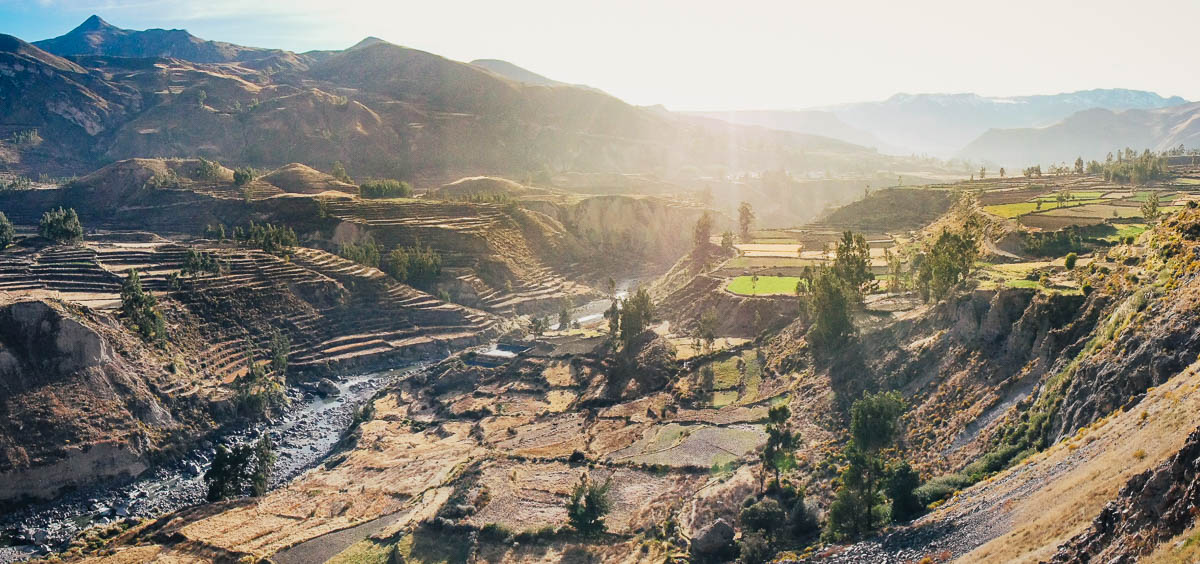There are a number of treks in this area but they are super intense, so we decided to see Colca Canyon without hiking. I’ve been traveling long enough to know when I can and can’t do a certain hike and this definitely didn’t seem like it was for me.
We went with Colonial Tours Colca Canyon tour, and it was quite cheap, around $30 for 2 days (more like 1.5) with lodging for the night. I think most of these tours follow the same path, so you’ll probably get a similar experience with many of the budget group tours.
People often ask if the 2 day tour is worth it. I thought it was, but everyone has different preferences, so how ’bout I just describe it here so you can figure out if the tour is worth it to you. I thought there were bits that were too manufactured for me, but on the other hand, travelling through this landscape and seeing the villages and the tough Andean people’s lives was worth it.
The Andes Experience
The tour started with a drive through the Salinas and Aguada Blancas reserve. This is where you can see the graceful vicuña bounding across the fields.
The vicuñas are cousins of llamas and alpacas but their hair is way softer and it’s the finest, most expensive fiber in the world at around $400-$600 per kg. Which is why this reserve exists – the vicuña were really close to extinction and the government decided they needed to protect them.
It’s strange because they just need to be sheared, not hunted for their hair and it’s terrible that they were being killed for it.
COOL STORY: In 1952, Dwight Eisenhower appointed Sherman Adams as chief of staff, a man known for his frugality and austerity.
Unfortunately, it hit the news that he had been gifted a vicuña coat from a New England businessman who figured he could grease some wheels in his dealings with the FTC.
There was such uproar that in the end, he resigned from the job and the scandal got labelled the Vicuña Coat Affair. Ah for those innocent days.
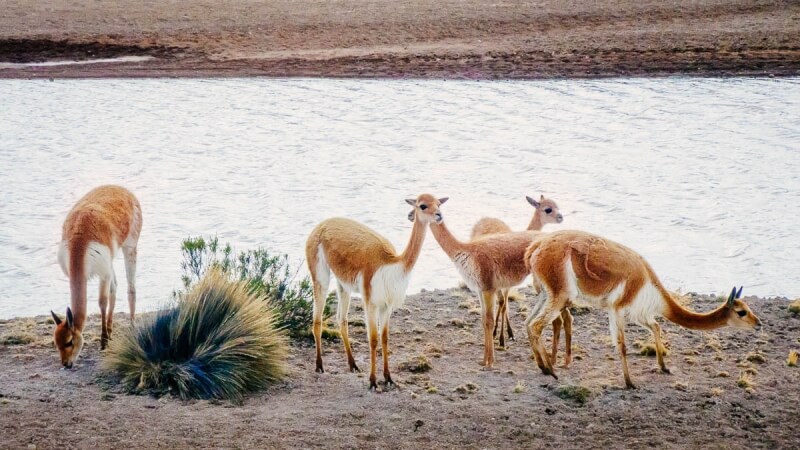
Some of the tours will stop of the side of the road and let you get off to get a good view of the vicuña. But we’d gotten in a massive traffic jam earlier and lost a good hour so we didn’t stop. I did manage to get some shots out the window, but not as great as I’d hoped.
The key thing is to try to look ahead so you’re ready for the shot when you see some vicuña. They’re pretty skittish and will probably skip away when the bus passes.
Keep the camera up close to the window and prefocused in the range you think they might be. Hopefully, though, you’ll be luckier than me and get a chance to get off the bus.
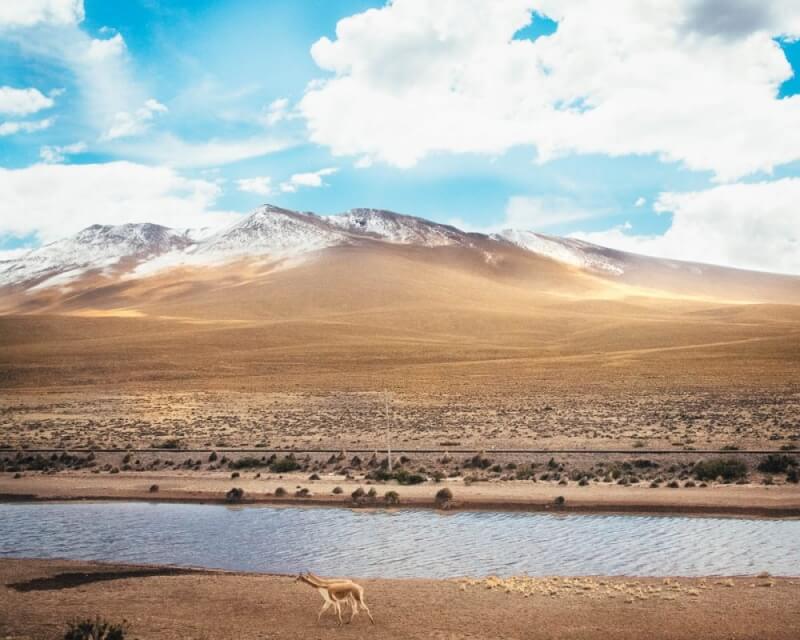
We did stop to see a field of alpacas and llamas, perhaps less exciting but still pretty cool.
If you do get off the bus, consider getting the dramatic mountains into the photo when you frame your shot. Otherwise the shots can get a bit monotone with the scrub and the animals being around the same tones.
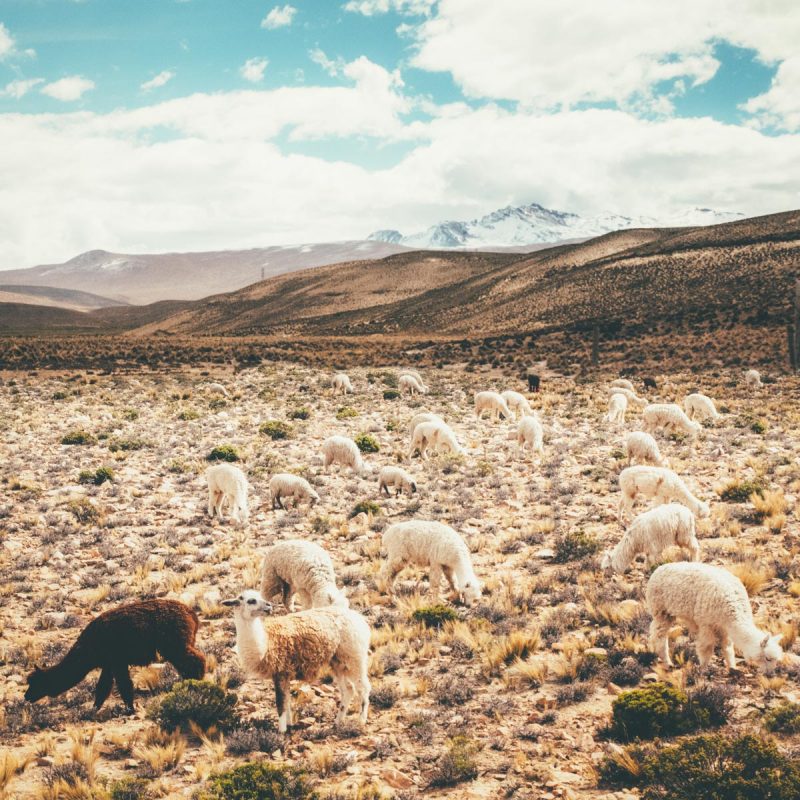
The landscape of the Andes changes as you climb in elevation. You start to see fewer large trees and more yellow and black tufts of grasses as you can see in the picture above.
The andean people call this grass paja brava or ‘fierce grass’ because almost nothing grows up in this cold, dry terrain.
As we used to say in the mountains, “Breathe. Breathe again. With every breath, you are alive.”
Nando Parrado, Miracle in the Andes
As we kept getting higher in altitude, we stopped at a small teashop to get some tea to warm us up, and help with altitude sickness. The Inca mate supposedly has a mixture of plants that relieve the nausea and lightheadedness of the high altitude.
No idea how well they work, but I didn’t feel ill at all, so a thumbs up from me!
Mirador de los Andes
The next stop was the Mirador de Los Andes – a viewpoint at a stunning 16,000ft above sea level. Although it was late July when we were there, the land was blanketed in new snow. The guide actually mentioned that it never ever snows at that time of year so this was pretty unusual.
As I stood there, the cold, dry air skimming the moisture off my skin, feeling the thinness of the air in every breath, staring at the majestic view, it was hard not to feel pretty inconsequential.
After all these years, this still the best advice I can give you: Savor your existence. Live every moment. Do not waste a breath.
Nando Parrado, Miracle in the Andes
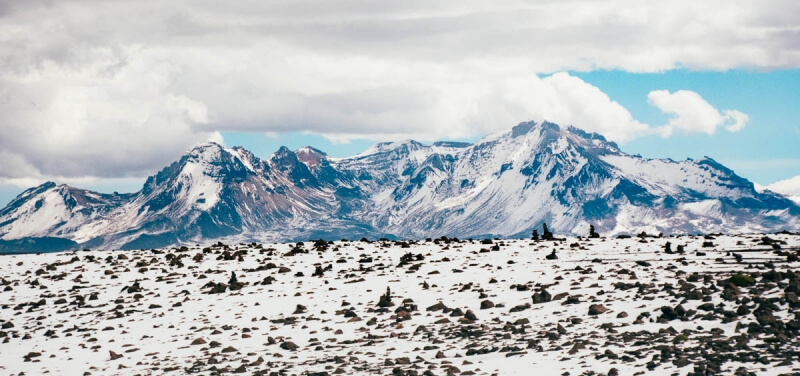
If you do have snow like we did, you’ll need to overexpose a bit. Or else the camera will overcompensate and underexpose the whole scene.
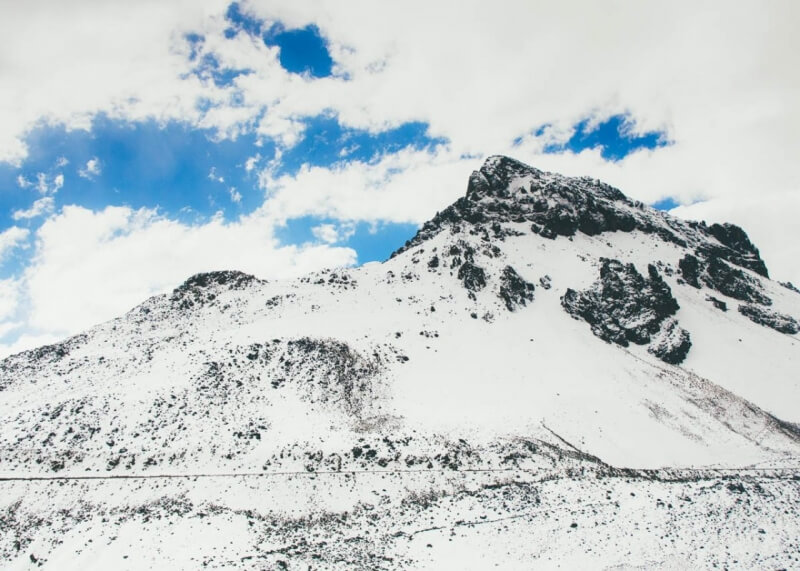
After this, we headed back down windy roads to the town where we would get dinner and stay for the night.
Chivay and Yanque
That night we stayed in Chivay, a little town in the Andes, and had dinner with a folk performance. It was decent although not a great shooting opportunity as it was indoors and hard to get any shots that didn’t include other diners.
There was also a band and amusingly the performance of the night was when a guide from the next table (yes, it’s that sort of place, every group is likely a tour) joined the band and belted out a pretty good performance of Guantanamera!
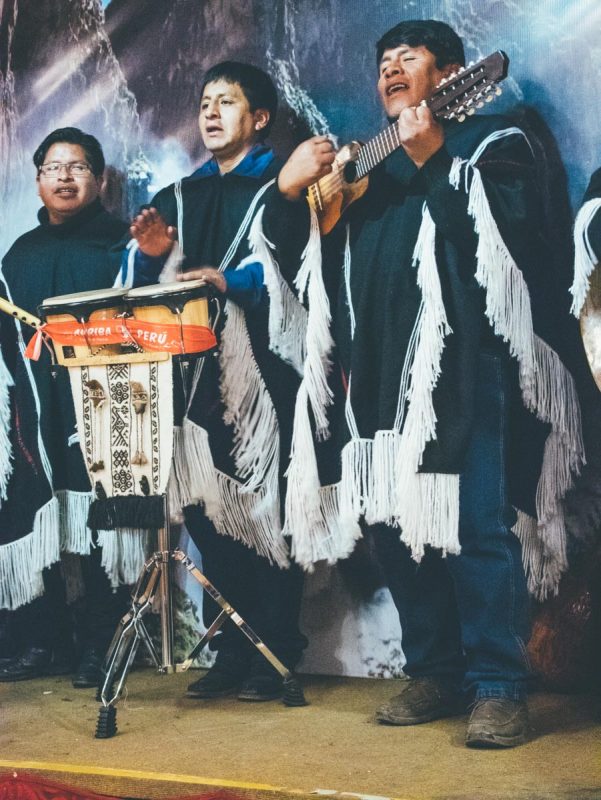
The next morning, we headed out to see the condors and stopped at a town called Yanque. A group of children dress in traditional costumes and dance a local dance in the town square every morning.
Allegedly they were collecting money for their school, and I donated some, but I did wonder how much they could possibly enjoy waking up every morning to do this.
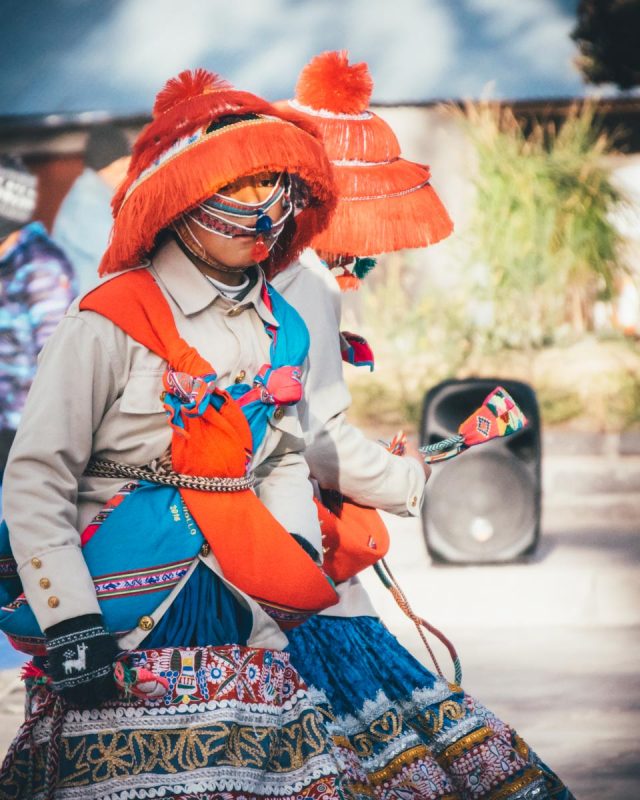
If you looked at their little faces, they seemed bored and tired, and not the least bit happy and proud, in contrast with other more impromptu children’s performances we’d seen in Peru or other places.
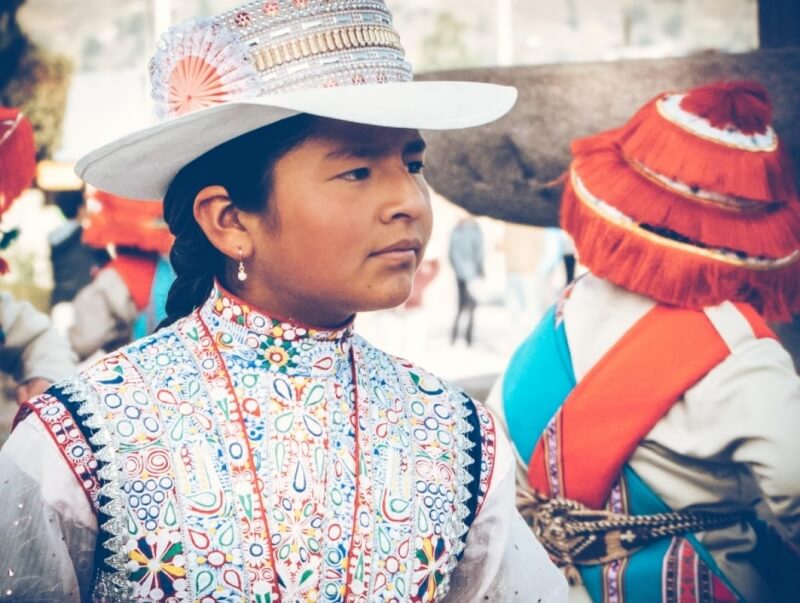
There are also the ubiquitous ladies with alpacas and llamas who will let you take a photo for a tip. I usually don’t try to get those photos because honestly everyone has one and they all look almost identical.
But I succumbed here, because I found their embroidered outfits and especially their hats really beautiful. I got a bit lucky with this llama snuggling her lady.
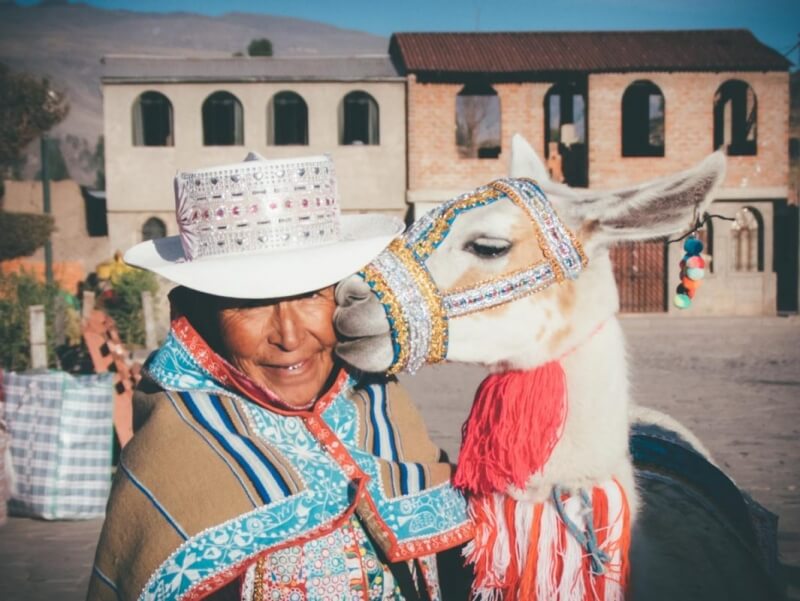
A lot of people were taking photos without tipping. I personally think well, it’s part of their livelihood, and that’s only true because the presence of tourists like me has made it so. So either I refrain from taking the photo, but if I do, I give them the tip. There’s plenty of other things to shoot if I want to refrain, and mostly I do.
I definitely refrain if they are holding a wild animal like a falcon or something, because then I am encouraging capture and poor treatment of the falcons. But llamas and alpacas have been domesticated for ages and these mountains are their home.
Colca Canyon Condors
The Cruz del Condor viewpoint gives you a look into the canyon and also a chance to see the magnificent condors. The Andean Condor is the world’s largest flying bird and they like to swoop around here and catch the thermals in the canyon.
You can see why they like it, it’s quite spectacular!
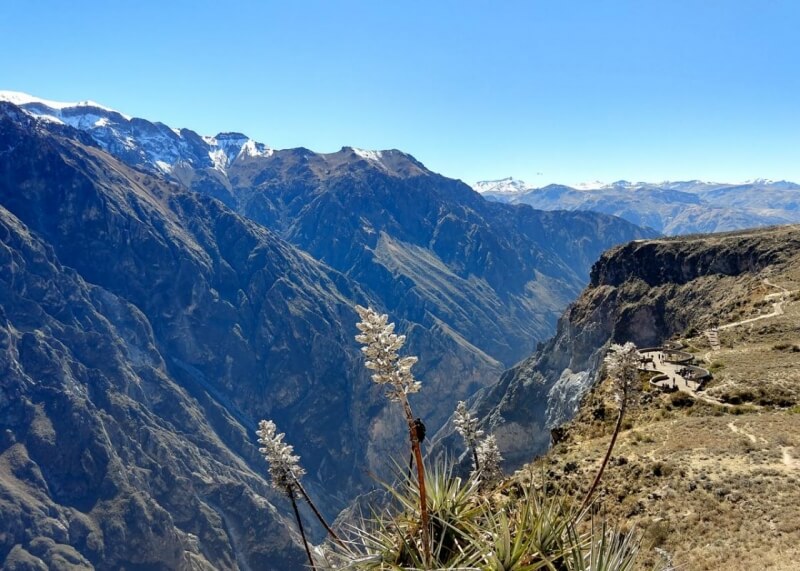
We stayed here for an hour or so which was awesome for shooting. I got to do it with patience as opposed to moving on too soon. At one point there were 7 condors flying around.
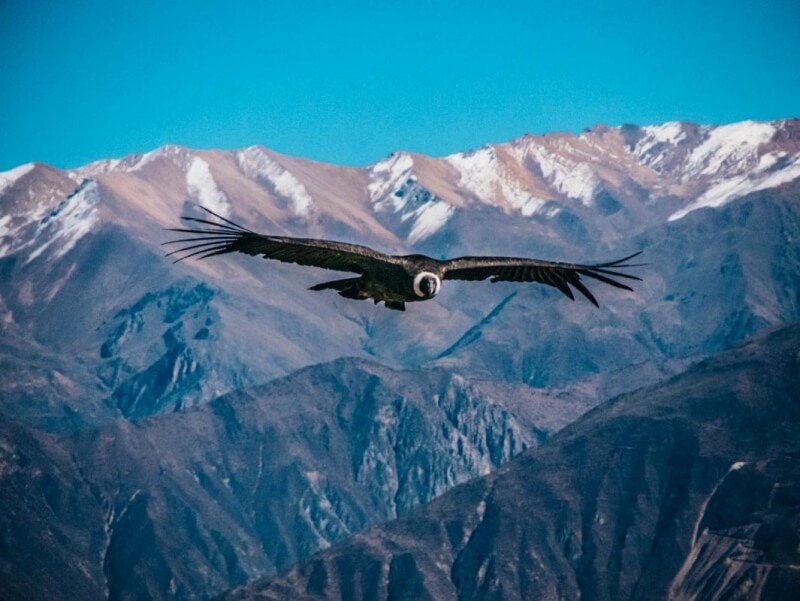
Views of Colca Canyon
The guide also stopped at a few great viewpoints to see the splendor of the canyon and terraces.
Don’t forget to take the chance to shoot the Colca Canyon itself along this trip. It’s twice as deep as the Grand Canyon in the States although much narrower.
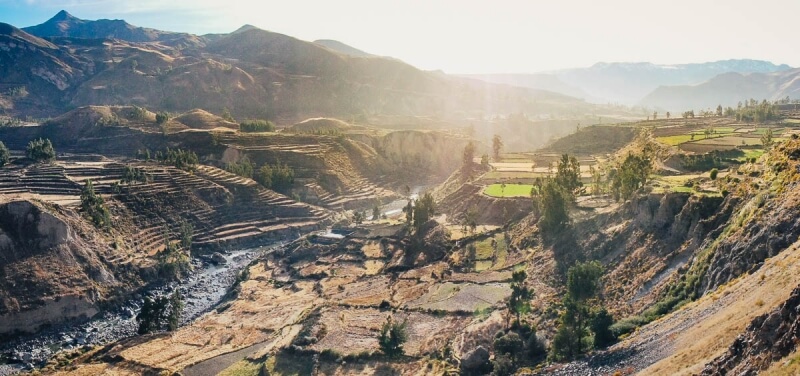
At some points like this one, you can see the countless rice terraces built by the Incas along its sides. I find it amazing that humans made these.
This is a good spot to take some panoramas. That’s one reason I love the Panasonic Gx-85 which takes panoramas in-camera!
Colca Canyon Without Hiking
So after a few viewpoints, we headed back to Arequipa. If you ask me if the tour was worth it, I’d say yes. The Andes are beautiful yet unforgiving and I kind of doubt I would have got to experience that without going on this tour.
I was also glad to not be hiking up and down it. The altitude is intense and after staying in Peru’s high altitude area for a month, I saw later on my Fitbit that my resting heartrate had been elevated the whole time we were there, and plummeted when we left.
As for the tour, there were some stops on the tour that seemed a bit manufactured, where we stopped for ‘shopping’ that were less interesting to me. But there was also plenty to see that was beautiful and real and unique.
This post has affiliate links. As an Amazon Associate I earn from qualifying purchases. The opinions presented are my own.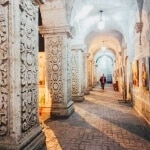
The Best Photo Spots in Peru
Peru has so many intensely beautiful natural and manmade sights. See what else there is to visit in Peru.
